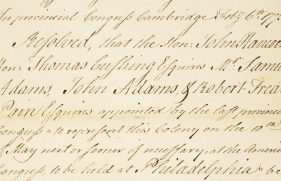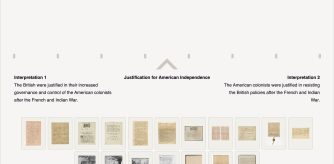Acting under the instruction of the Virginia Convention, Richard Henry Lee, ranking delegate from Virginia, read from this paper when he formally proposed independence in the Second Continental Congress on June 7, 1776.
Because many members of the Continental Congress believed what Lee proposed to be premature or wanted instructions from their colonies before voting, approval was deferred until July 2. On that date, the Continental Congress adopted the first part (the declaration), resolving that the colonies were independent; two days later it adopted the Declaration of Independence.
The plan for making treaties was not approved until September of 1776; the plan of confederation was delayed until November of 1777.
This document was featured in “Rough Journal Page Documenting Ratification and Final Page of the Treaty of Paris, 1783” in the September 2008 National Council for the Social Studies (NCSS) publication Social Education.





